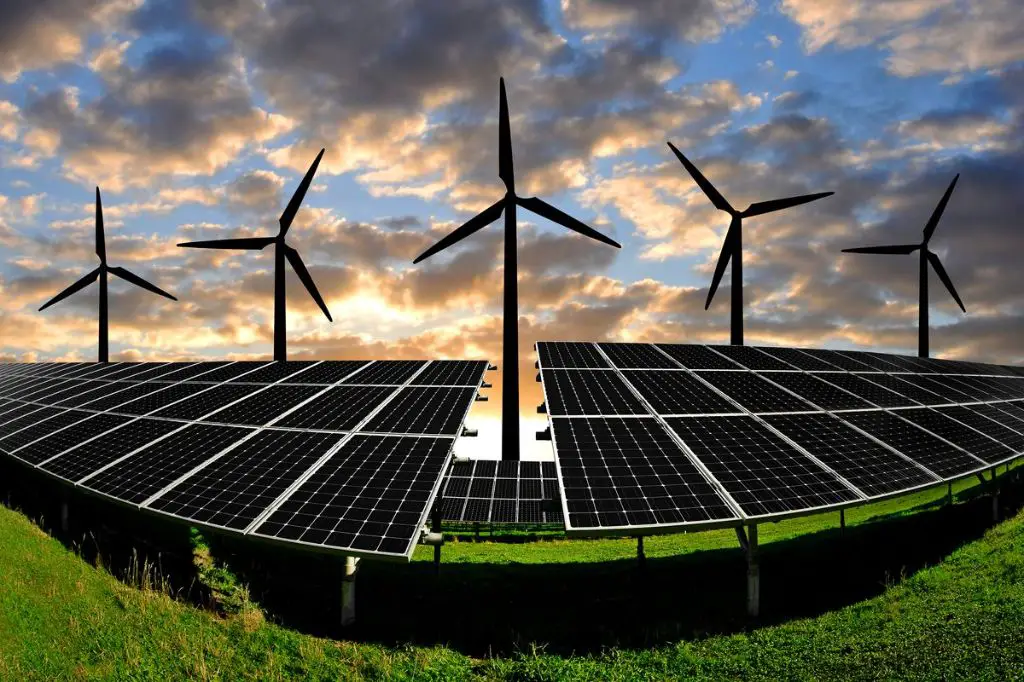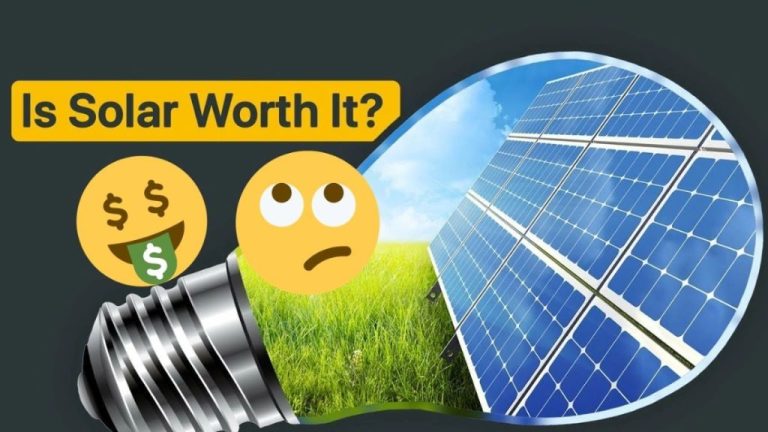Why Hasn T America Switched To Renewable Energy?

Despite growing momentum and support for renewable energy in the United States, the overwhelming majority of American energy still comes from fossil fuel sources. According to the U.S. Energy Information Administration, about 60% of electricity generation in 2020 was from fossil fuels like coal, natural gas, and petroleum. And approximately 80% of total U.S. energy production is from fossil fuels. This reliance persists despite concerns about climate change and carbon emissions, showing the systemic inertia blocking a transition to renewable energy.
While there are encouraging signs with expanding solar and wind capacity, fundamental shifts in energy policy, infrastructure, and markets are still needed for renewable sources to displace the entrenched system based on oil, gas, and coal. America’s failure to more rapidly switch to clean energy stems from a complex mix of factors, including fossil fuel subsidies, powerful industry lobbies, infrastructure challenges, reliability concerns, and conservative political opposition.
Historical Reliance on Fossil Fuels
The United States has relied heavily on fossil fuels like coal, oil, and natural gas since the Industrial Revolution in the 19th century. Coal was the primary energy source that powered early industrialization, helping drive economic growth for decades. As the JSTOR Daily article notes, coal mining took off in the mid-Atlantic region in the 1800s, providing abundant supplies of fossil fuel energy.
Eventually coal was overtaken by petroleum as the top energy source. According to the Department of Energy, by 1961 oil had become the major fuel for electricity generation. And natural gas has grown enormously as well, especially in recent decades. This long history of fossil fuel reliance has made it difficult for renewable sources to displace them.
Powerful Oil and Gas Lobby
The oil and gas industry has a powerful lobby that spends millions each year to influence policymakers and shape energy policy in their favor. According to research by OpenSecrets, the oil and gas industry spent around $124.4 million on lobbying the federal government in 2022 alone [1]. This lobbying aims to protect tax breaks and subsidies for fossil fuel companies, advocate for pipelines and infrastructure projects, and block or weaken climate change policies that threaten the industry’s bottom line.
Major players in the oil and gas lobby include trade groups like the American Petroleum Institute, companies like ExxonMobil and Chevron, and lobbying firms hired to influence legislators. California is another key lobbying target, with oil companies spending over $10 million in 2022 to influence policy in the state [2]. With deep pockets and political connections, the fossil fuel lobby remains a significant obstacle to stronger climate action and a transition to renewable energy.
Subsidies for Fossil Fuels
The fossil fuel industry has benefitted from billions of dollars in government subsidies for decades. According to an IMF report, fossil fuel subsidies surged to a record $7 trillion globally in 2022. In the US, subsidies take the form of direct spending, tax breaks, and failure to account for environmental impacts. A 2016 Reuters analysis found that renewable energy subsidies totaled $15.6 billion, while fossil fuel subsidies were estimated to be $649 billion from 2010 to 2015 according to the IMF. Critics argue the disparity favors the mature fossil fuel industry over nascent renewable energy. Reducing or removing subsidies is seen as a necessary step to level the playing field and enable a transition to clean energy.
Cost and Reliability Concerns
One of the main barriers to wider adoption of renewable energy in the United States is the perception that it is more expensive and less reliable than conventional energy sources like coal, natural gas, and nuclear power. The infrastructure for fossil fuel-based energy is already in place, so transitioning to renewables requires high upfront costs for new technology and transmission lines. According to a report by the U.S. Energy Information Administration, the average levelized cost per megawatt-hour of onshore wind and solar PV was higher than natural gas in 2019.
There are also concerns around the intermittent nature of renewables like wind and solar power. The sun does not always shine and the wind does not always blow, so backup power sources are needed for times when renewable generation is low. This further adds to costs. Battery storage solutions are being developed to address intermittency issues, but have not yet been widely adopted.
Lack of Strong Policy
The United States lacks a comprehensive federal policy to drive a large-scale transition to renewable energy. While some important legislation has passed, such as the Energy Policy Acts of 1992 and 2005 Summary of the Energy Policy Act | US EPA, these laws do not mandate any specific targets or timeline for phasing out fossil fuels and ramping up renewable energy generation.
Without a strong, binding national renewable energy policy that sets clear goals and provides incentives, the U.S. has not been able to coordinate a systemic shift away from coal, oil, and natural gas. The transition costs are high, opposition from fossil fuel interests is strong, and many leaders and voters remain unconvinced of the need for urgent action.
In contrast, countries like Germany, Spain, and Denmark that implemented ambitious national renewable energy plans have seen much faster growth in wind and solar power adoption. Though the U.S. has made progress in renewables, lack of robust federal policies is a key reason why broader transformation has lagged.
Infrastructure Challenges
Transitioning to renewable energy on a large scale requires major upgrades and changes to existing energy infrastructure. Much of the current electric grid and pipelines were built to support fossil fuel energy generation and transmission. Significant investment and construction is needed to connect and transmit power from utility-scale solar and wind farms to cities and towns.
Long-distance high voltage transmission lines must be built to transport renewable electricity from prime solar and wind generation regions to population centers. According to the U.S. Department of Energy, an estimated $300 billion to $550 billion is needed over the next 10 years to upgrade the grid for renewables (IEA). Upgrading pipelines and other infrastructure for transporting and distributing biofuels is another major challenge.
The intermittent nature of solar and wind power also requires major investments in energy storage and transmission infrastructure to meet demand when the sun isn’t shining or wind isn’t blowing. Building out these systems to support national scale renewable adoption will take considerable time, resources, and coordinated long-term planning.
Conservative Opposition
Some conservative groups and politicians ideologically oppose transitioning to renewable energy sources. Despite evidence showing the cost-competitiveness and reliability of renewables like wind and solar, many conservatives remain wedded to fossil fuels. For example, the Texas Public Policy Foundation, a conservative think tank, has waged a campaign against renewable energy mandates in Texas, arguing that they undermine free market competition. The Foundation’s stance reflects a broader aversion among conservatives to being forced to adopt renewable energy before it has fully proven itself in their view.
This ideological opposition stems in part from fossil fuel industry ties. In recent years the oil and gas industry has dramatically ramped up donations to conservative groups and politicians, aligning them against policies that threaten the industry’s bottom line. Renewable energy mandates and subsidies for wind and solar undermine fossil fuels, triggering conservative resistance. Additionally, some conservatives view climate change as a liberal cause, leading them to reflexively oppose renewable energy policies designed to address climate change regardless of their other merits.
Impact on Fossil Fuel Industry
A switch to renewable energy would significantly impact the fossil fuel industry in terms of jobs and communities that are economically dependent on the status quo. According to the U.S. Energy and Employment Report, over 900,000 people were employed in the fuels sector in 2021, with most jobs lost being in fossil fuels [1]. The oil and gas industry alone supports 9.8 million U.S. jobs according to PwC [2]. Transitioning these workers to new industries is an enormous challenge. Studies estimate that 1.7 million fossil fuel workers in the U.S. need support to transition to new jobs as the country moves away from fossil fuels [3]. Entire communities built around fossil fuel extraction and processing could see their local economies decline without proper planning for an equitable transition.
Conclusion
In summary, America has been slow to transition to renewable energy for a variety of complex reasons. The nation has a long history of relying on fossil fuels, and the oil, gas and coal industries remain powerful lobbies. Fossil fuels continue to receive significant government subsidies, making them artificially cheaper than renewables. Despite steadily falling prices, many still perceive renewable energy as more expensive and unreliable compared to conventional sources. Additionally, lack of strong policy, challenges updating infrastructure, and conservative political opposition have hindered the transition. Shifting away from fossil fuels would profoundly impact workers and communities dependent on the oil, gas and coal industries.
Looking ahead, further technological improvements and cost reductions for renewables are likely. But a massive transition to clean energy will require robust government policy and investment, along with public pressure for action on climate change. With the right strategies and political will, the U.S. could potentially tap into its immense renewable resources and build a sustainable energy system over the coming decades.





